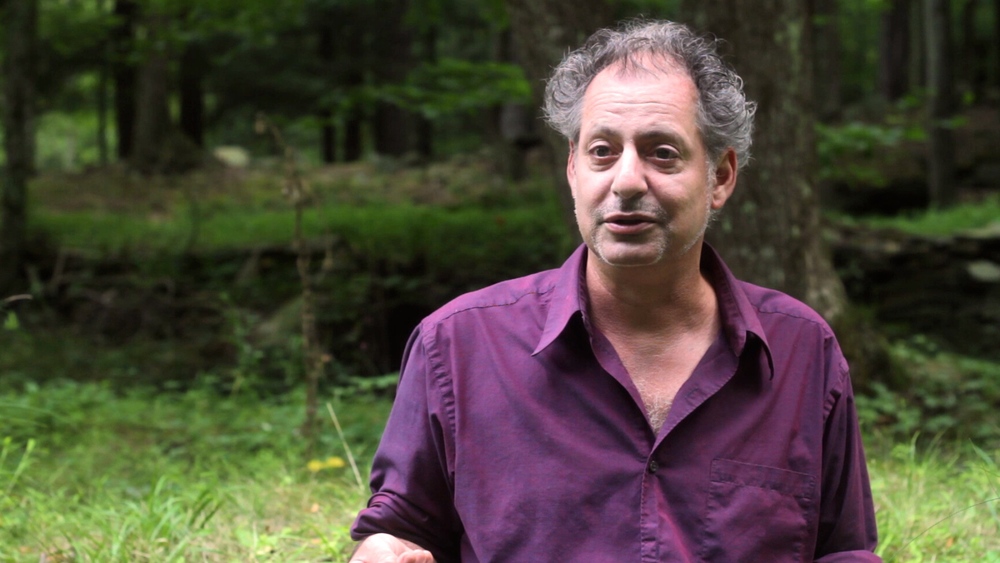By N.T. Wright
December 20, 2016

Bartolomé Esteban Perez Murillo - Adoration of the Shepherds (1668)
One of the greatest journalists of the last generation, Bernard Levin, described how, when he was a small boy, a great celebrity came to visit his school. The headmaster, perhaps wanting to impress, called the young Levin to the platform in front of the whole school.
The celebrity, perhaps wanting to be kind, asked the little boy what he'd had for breakfast. "Matzobrei," replied Levin.
A typical central European Jewish dish, Matzobrei is made of eggs fried with matzo wafers, brown sugar, and cinnamon. Levin's immigrant mother had continued to make it even after years of living in London. To him, it was a perfectly ordinary word for a perfectly ordinary meal.
But the celebrity, ignorant of such cuisine, thought he'd misheard. He repeated his question. Levin, now puzzled and anxious, gave the same answer. The celebrity looked concerned and glanced at the headmaster: What is this word he's saying?
The headmaster, adopting a "there-there-little-man" tone, asked Levin once more what he had had for breakfast. Dismayed, not knowing what he'd done wrong, and wanting to burst into tears, the boy said once more the only answer he could honestly give: "Matzobrei."
After an exchange of incredulous glances on the platform, the terrified little boy was sent back to his place. The incident was never referred to again, but to him it was a horrible ordeal.
A Jewish word spoken to an uncomprehending world; a child's word spoken to uncomprehending adults; a word for a food of which others were unaware - it all feels very Johannine. "In the beginning was the Word ... and the Word was made flesh" (John 1:1, 14). We are so used to that passage, the great cadences, the solemn but glad message of the Incarnation, that we risk skipping over the incomprehensibility, the oddness, the almost embarrassing strangeness of the Word:
"The light shines in the darkness, and the darkness didn't comprehend it; the world was made through him and the world didn't know him; he came to his own, and his own didn't receive him." (John 1:5, 10-11)
John is saying two things simultaneously in his prologue (two hundred things, actually, but I'll concentrate on two): first, that the Incarnation of the eternal Word was the event for which the whole of creation had been waiting all along; second, that creation and even the people God were quite unready for this event. Jew and Gentile alike, upon hearing of this strange Word, cast anxious glances at one another, like the celebrity and the headmaster hearing a little boy telling the truth in a language they didn't understand.
That is the puzzle of Christmas. John's prologue is designed to stay in the mind and heart throughout the subsequent story. Never again in the Gospel of John is Jesus referred to as "the Word," but we are meant to look at each scene - the call of the first disciples, the changing of water into wine, the confrontation with Pilate, the Crucifixion, and the Resurrection - and think to ourselves: This is what it looks like when the Word becomes flesh. Or, if you like: Look at this man of flesh and learn to see the living God.
But watch what happens as it all plays out. He comes to his own, and his own don't receive him. The light shines in the darkness, and though the darkness can't overcome it, the darkness sure tries. He speaks the truth, the plain and simple words, like the little boy saying what he had for breakfast, and Caiaphas and Pilate, uncomprehending, can't decide whether he's mad or wicked or both.
Though Jesus is never again referred to as the Word of God, we find the theme transposed throughout the Gospel with endless variations. The Living Word speaks living words, and the reaction is the same. "This is a hard word," say his followers when he tells them that he is the bread come down from heaven (John 6:60). "What is this word?" asks the puzzled crowd in Jerusalem (John 7:36). "My word finds no place in you," says Jesus, "because you can't hear it" (John 8:37, 43). "The word I spoke will be their judge on the last day," he insists (John 12:48), as the crowds reject him.
When Pilate hears the word, says John, he is afraid, since the word in question is Jesus' reported claim to be the Son of God (John 19:8). Unless we recognize this strange, dark strand running through the Gospel, we will domesticate John's masterpiece (just as we're always in danger of domesticating Christmas) and think it's only about comfort and joy. In truth, it's also about incomprehension, rejection, darkness, denial, stopped ears and judgment.
Christmas is not about the living God coming to tell us everything's all right. John's Gospel isn't about Jesus speaking the truth and everyone saying "Of course! Why didn't we realize it before?" It is about God shining his clear, bright torch into the darkness of our world, our lives, our hearts, our imaginations - and the darkness not comprehending it. It's about God, God as a little child, speaking words of truth, and nobody knowing what he's talking about.
You may be aware of that puzzlement, that incomprehension, that sense of a word being spoken which seems like it ought to mean something but which remains opaque to you. If that's the point you are at, the Good News is that along with this theme of incomprehension and rejection is a parallel theme of people hearing and receiving Jesus's words, believing them and discovering, as he says, that they are spirit and life (John 6:63). "As many as received him, to them he gave the right to become God's children, who were born not of human will or flesh, but of God" (John 1:12). "If you abide in my words, you will know the truth and the truth shall set you free" (John 8:32). "If anyone keeps my words, that person will never see death" (John 8:51). "You are already made clean by the word which I have spoken to you" (John 15:3).
Don't imagine that the world divides naturally into those who can understand what Jesus is saying and those who can't. By ourselves, none of us can. Jesus was born into a world where everyone was deaf and blind to him. But some, in fear and trembling, have allowed his words to challenge, rescue, heal and transform them. That is what's offered at Christmas, not a better-focused religion for those who already like that sort of thing, but a Word which is incomprehensible in our language but which, when we learn to hear, understand and believe it, will transform our whole selves with its judgment and mercy.
Out of the thousands of things that follow directly from this reading of John, I choose three as particularly urgent.
First, John's view of the Incarnation, of the Word becoming flesh, strikes at the very root of the liberal denial which characterized mainstream theology thirty years ago and whose long-term effects are still with us. I grew up hearing lectures and sermons declaring that the idea of God becoming human was a categorical error. No human being could be divine; Jesus must therefore have been simply a human being, albeit (here the headmaster pats the little boy on the head) a very brilliant one. Jesus points to God, but he isn't actually God.
A generation later, growing straight out of that school of thought, a clergyman wrote to me saying that the church doesn't know anything for certain. Remove the enfleshed and speaking Word from the centre of your theology, and gradually the whole thing unravels, until all you're left with is the theological equivalent of the grin on the Cheshire Cat: a relativism whose only moral principle is that there are no moral principles, no words of judgment (because nothing is really wrong, except saying that things are wrong), no words of mercy (because you're all right as you are, so all you need is affirmation).
That's where our society stands right now, and John's Christmas message issues a sharp and timely reminder to relearn the difference between mercy and affirmation, between a Jesus who both embodies and speaks God's word of judgment and grace and a homemade Jesus who gives us good advice about discovering who we really are. No wonder John's Gospel has been so unfashionable in many circles.
There is a fad in some quarters about a "theology of incarnation," meaning that our task is to discern what God is doing in the world and to do it with him. But that is only half the truth, and the wrong half to start with. John's theology of the Incarnation is about God's Word coming as light into darkness, as a hammer that breaks the rock into pieces, as a fresh word of judgment and mercy.
You might as well say that an incarnational missiology is about discovering what God is saying No to today and finding out how to say it with him. That was the lesson Barth and Bonhoeffer had to teach in Germany in the 1930s, and it's all too relevant as today's world becomes simultaneously more liberal and more totalitarian. This Christmas, get real, get Johannine, and listen again to the strange words spoken by the Word made flesh.
Second, John's prologue by its structure reaffirms the order of Creation at the point where it is being challenged today. John consciously echoes the first chapter of Genesis: "In the beginning God made heaven and earth; in the beginning was the Word" (John 1:1). When the Word becomes flesh, heaven and earth are joined together at last, as God always intended.
But the Creation story, which begins with the duality of heaven and earth, reaches its climax in the duality of male and female. When heaven and earth are joined together in Jesus Christ, the glorious intention for the whole of Creation is unveiled, reaffirming the creation of male and female in God's image. There is something about the enfleshment of the Word in John 1 that stands parallel to Genesis 1 and speaks of Creation fulfilled. We see what's going on: Jesus Christ has come as the Bridegroom, the one for whom the Bride has been waiting.
Not for nothing is Jesus's first sign to transform a wedding from disaster to triumph. Not for nothing do we find a man and a woman at the foot of the Cross. The same incipient gnosticism which says that true religion is about "discovering who we really are" is all too ready to say that who we really are may have nothing to do with being physically created as male or female. But the Christmas message is about the redemption of God's good world, his wonderful Creation, so that it can be the glorious thing it was made to be. This word is strange, even incomprehensible, in today's culture. But if you have ears to hear, then hear it.
Third, we return to the meal, the food whose name is strange, forbidding, even incomprehensible to those outside, but the most natural thing to those who know it. The little child comes and speaks to us of food that he offers: himself, his own body and blood. It is a hard saying, and those of us who know it well may need to remind ourselves just how hard it is, in case we have been dulled by familiarity into supposing that it's easy and undemanding. It isn't. It is the Word which judges the world and saves the world, the Word now turned into flesh, into matzo, Passover bread, the bread which is the flesh of the Christ child, given for the life of the world.
Listen, because the incomprehensible Word, the child, speaks to you. Don't patronize him; don't reject him; don't sentimentalize him. Learn the language within which he makes sense. And come to the table to enjoy the breakfast, the breakfast which is he himself, the Word made flesh, the Life which is our life, our light, our glory.
N.T. Wright is Professor of New Testament and Early Christianity in the School of Divinity at the University of St. Andrews, Scotland. He is one of the world's most distinguished and influential New Testament scholars. His most recent book is The Day the Revolution Began: Reconsidering the Meaning of Jesus's Crucifixion.

